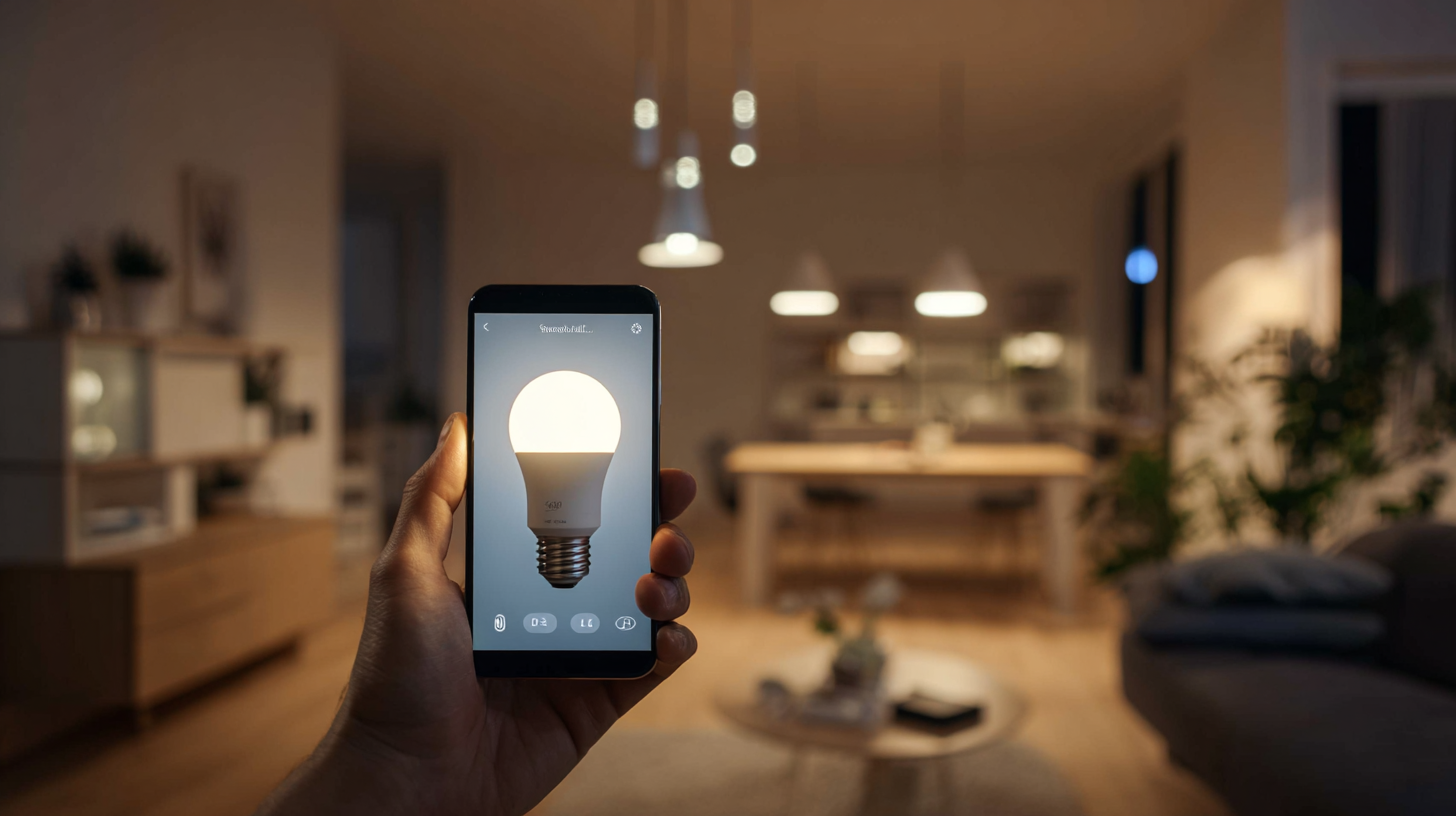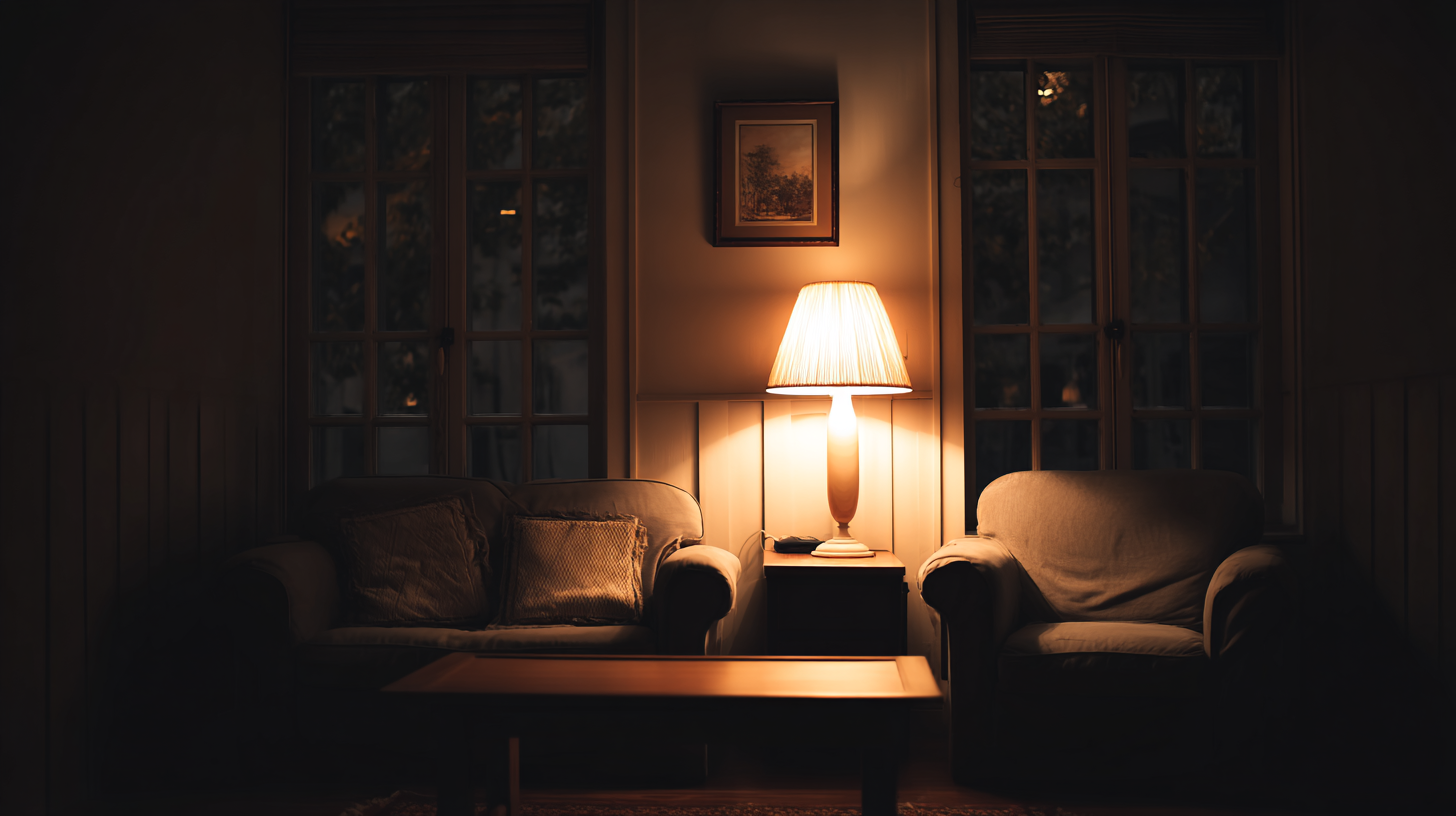10 Innovative Ways to Choose the Best Smart Lighting for Your Home
In today’s rapidly evolving technological landscape, Smart Lighting has emerged as a transformative solution for enhancing both the functionality and aesthetic appeal of our living spaces. As homeowners increasingly seek ways to incorporate innovative technologies into their daily lives, the selection of the right smart lighting system becomes crucial. From creating the perfect ambiance for any occasion to optimizing energy efficiency, the possibilities are virtually limitless.

This blog will explore ten innovative methods to help you choose the best smart lighting for your home. Whether you’re looking to upgrade your existing setup or start from scratch, understanding the various applications and features of smart lighting will empower you to make informed decisions that reflect your unique style and needs. Join us as we illuminate the path to smarter living!
The Importance of Smart Lighting for Modern Homes
Smart lighting has become an essential element of modern homes, not only for its aesthetic appeal but also for its contribution to energy efficiency and user convenience. According to a report by Navigant Research, the global smart lighting market is projected to grow from $4.8 billion in 2020 to over $24 billion by 2027, reflecting a significant shift towards intelligent home solutions. This surge in adoption can be attributed to the increasing awareness of energy-saving technologies, as smart lighting systems can reduce energy consumption by up to 80% compared to traditional lighting options.
Moreover, smart lighting enhances the overall living experience by integrating seamlessly with various home automation systems. A study conducted by the Consumer Technology Association found that 40% of consumers reported improved comfort and convenience in their daily lives by using smart lighting. Features such as remote control, customizable settings, and integration with voice-activated assistants not only offer greater control over lighting conditions but also enable homeowners to create personalized environments that adapt to different moods and activities. As the demand for smart solutions continues to rise, the importance of selecting the right smart lighting system becomes clearer, positioning it as a key component of modern home design.
Evaluating Your Lighting Needs: Understanding Different Spaces
When selecting smart lighting for your home, it's essential to evaluate the unique needs of each space. Different rooms serve various purposes, influencing the type of lighting required. For instance, a study or home office benefits from bright, focused illumination, which studies suggest can enhance productivity by up to 23%. In contrast, softer, warmer lights are ideal for living rooms and bedrooms, promoting relaxation and comfort.
Tip: Consider the function of each space when planning your lighting. Use daylight-mimicking bulbs in work areas to reduce eye strain, while incorporating dimmable options in relaxation zones to create the perfect ambiance.
 Moreover, understanding the scale and layout of your rooms can significantly impact your lighting choices. According to a report by the American Lighting Association, layering light—combining ambient, task, and accent lighting—can enhance functionality and aesthetics. For example, in a kitchen, bright task lighting is crucial for work areas, while accent lights can highlight architectural features or decorations.
Moreover, understanding the scale and layout of your rooms can significantly impact your lighting choices. According to a report by the American Lighting Association, layering light—combining ambient, task, and accent lighting—can enhance functionality and aesthetics. For example, in a kitchen, bright task lighting is crucial for work areas, while accent lights can highlight architectural features or decorations.
Tip: Measure your room dimensions and plan lighting zones accordingly. Utilize smart bulbs that allow you to adjust color temperature and brightness based on the time of day or activity, ensuring every space is perfectly illuminated.
Top Smart Lighting Features to Enhance Your Home Experience
Smart lighting has revolutionized how we interact with our home environments, offering not just convenience but also a wealth of features designed to enhance our daily experiences. One of the standout features to consider is color temperature control, allowing users to adjust the warmth or coolness of the light. This flexibility can create different moods throughout the day; for instance, cooler lights can boost productivity during work hours, while warmer tones can create a cozy atmosphere for relaxation in the evening.
Another innovative feature to look for is smart integration with home automation systems. The ability to control lighting through voice commands or automated schedules can significantly enhance convenience and energy efficiency. Imagine being able to set your lights to gradually brighten in the morning, simulating a natural sunrise, or having them automatically dim when it's time for a movie night. Additionally, advanced security features, such as motion detection and remote access, allow homeowners to manage their lighting from anywhere, providing peace of mind while away from home. These capabilities not only contribute to a more comfortable living space but also increase the overall security of your home.
Top Smart Lighting Features Preferences
This chart displays the preferences for various smart lighting features based on a survey of homeowners. Each feature has been rated by users, highlighting the most valued aspects of smart lighting solutions.
How to Choose Energy Efficient Smart Bulbs for Long-Term Savings
When considering energy-efficient smart lighting for your home, it's essential to focus on long-term savings and sustainability. According to a report by the U.S. Department of Energy, LED lighting, which is a popular choice for smart bulbs, uses at least 75% less energy and lasts 25 times longer than incandescent lighting. This substantial reduction in energy consumption translates to significant savings on your electricity bill. For instance, replacing a single 60-watt incandescent bulb with an equivalent 10-watt LED can save approximately $55 in energy costs over the bulb's lifetime.

In addition to bulb longevity, the ability to adjust brightness and color temperature with smart lighting systems can greatly enhance energy efficiency. The American Council for an Energy-Efficient Economy (ACEEE) suggests that utilizing features such as scheduling and remote control can further optimize energy usage by ensuring that lights are only active when needed. With smart bulbs often controllable via smartphones or home automation systems, homeowners can easily manage their energy consumption, achieving both comfort and efficiency. By strategically selecting energy-efficient smart bulbs, you not only contribute to a lower carbon footprint but also enjoy considerable financial savings over time.
Integrating Smart Lighting with Home Automation Systems
Integrating smart lighting with home automation systems is a game-changer for modern homes. According to a recent report by Grand View Research, the global smart lighting market is expected to reach $75.28 billion by 2027, driven by growing investments in smart home technologies. Smart lighting not only enhances convenience but also contributes to energy efficiency, with many systems allowing users to monitor and control their energy consumption seamlessly.
When selecting smart lighting options, consider compatibility with existing home automation systems such as Google Home or Amazon Alexa. This ensures easy integration and expands functionality. Tip: Look for systems that support Zigbee or Z-Wave protocols, as they provide better interoperability with various home devices.
Additionally, prioritize features like remote access and scheduling capabilities, which can help create ambiance and save energy. Tip: Use motion sensors to automate lighting in high-traffic areas, reducing energy waste when rooms are unoccupied. By choosing the right smart lighting solutions, homeowners can create a fully integrated smart home environment that enhances both comfort and efficiency.
